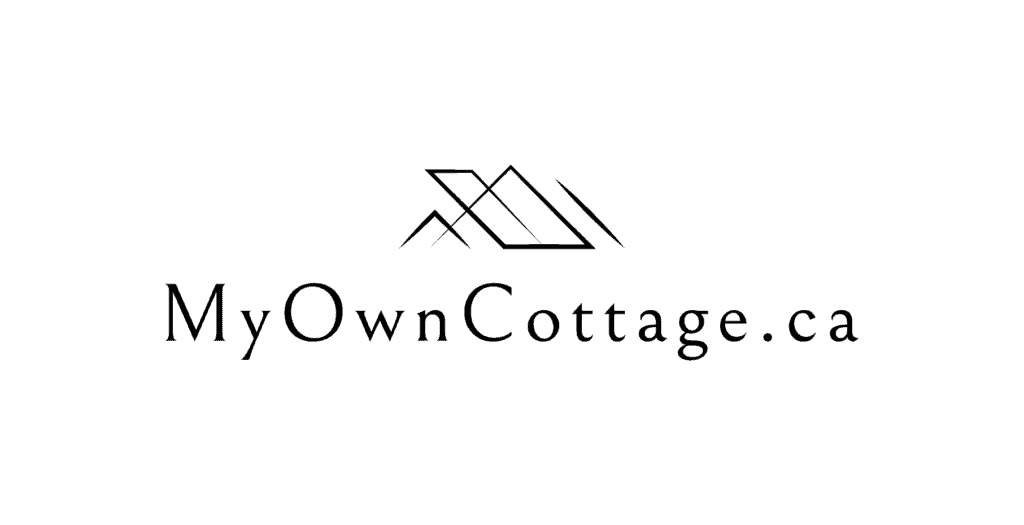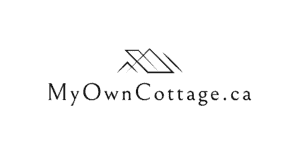Permits and Zoning Rules for Prefab Homes in London
Understand permits and zoning rules for prefab homes in London.
Get clear guidance on planning, compliance, and approvals for your project.
📜 Permits and Zoning Rules for Prefab Homes in London, Ontario: Costs & a Step-by-Step Plan
Understanding permits and zoning rules for prefab homes in London is necessary to ensure you follow the Ontario Building Code, secure a building permit, and comply with local zoning by-law rules.
Modular designs may benefit from the city’s pre-approval pilot program to simplify the permit process.
🏠 What Defines a Prefab or Modular Home in London, Ontario?
Modular homes/ARUs are factory-built to comply with Part 9 of the Ontario Building Code or the CSA A277 standard, then delivered and assembled onsite.
The City of London offers a pilot pre-approval program for modular/detached ARU designs.
Such designs must be Ontario Building Code–compliant, created by a qualified designer or architect, and submitted with construction drawings and renderings.
🛠️ How to Get a Prefab Home Building Permit in London, Ontario: Requirements & Process
Modular Homes and Additional Residential Units (ARUs) in London, Ontario
In London, Ontario, modular homes and Additional Residential Units (ARUs) are factory-built dwellings.
They are constructed to meet Part 9 of the Ontario Building Code or the CSA A277 standard—Canada’s national certification for quality in factory-built housing.
These homes are manufactured in a controlled environment and inspected for code compliance before leaving the factory.
Upon completion, they are then transported and assembled onsite, ensuring consistent build quality and faster timelines.
City of London, Ontario Pilot Pre-Approval Program for Modular Homes and Additional Residential Units (ARUs)
The City of London currently operates a pilot pre-approval program for modular and detached ARU designs.
This initiative can significantly reduce permit processing times by allowing pre-vetted designs to bypass certain review steps. To qualify, designs must:
Fully comply with the Ontario Building Code.
Be created by a qualified designer holding a Building Code Identification Number (BCIN), or by a licensed architect.
Include complete construction drawings and detailed renderings.
This program is particularly valuable for homeowners and builders seeking streamlined approvals for backyard suites, garden homes, or other modular ARU projects.
It greatly assists in ensuring safety, durability, and zoning compliance.
🔍 If you’re exploring ways to budget for your build, get expert insights on financing options for prefab homes in London, Ontario.
📍 London, Ontario Zoning By-Laws & Additional Residential Unit (ARU) Regulations
Additional Residential Unit (ARU) Zoning Rules in London, Ontario
In London, Ontario, Additional Residential Units (ARUs)—also known as Accessory Residential Units—are permitted on lots zoned for:
Single-detached dwellings
Semi-detached dwellings
Duplexes
Triplexes
Converted dwellings (where zoning allows)
Under the City’s current zoning by-law, you can have up to four total dwelling units per lot, with a maximum of three ARUs.
Of those, only two may be located in detached structures (such as garden suites or backyard homes).
Zoning and Placement Requirements for Detached Additional Residential Units (ARUs) in London, Ontario
Must be located in the rear yard or interior side yard—never between the main dwelling and the street frontage.
Must comply with lot coverage limits, minimum setbacks, and landscaping/open space requirements.
No additional parking spaces or new driveways are permitted beyond existing site provisions.
These regulations are designed to increase housing choice while maintaining neighbourhood character, protecting privacy, and ensuring adequate green space.
For official details, refer to the City of London Zoning By-law and Additional Residential Units Guide.
📑 Step-by-Step Permit & Approval Process for Prefab Homes in London, Ontario
1. Start with the City’s Pre-Approval Pilot Program
If you’re building a modular Additional Residential Unit (ARU) in London, Ontario, consider submitting your design through the City’s pre-approval program.
Pre-approved designs can significantly reduce permit review times by bypassing certain plan checks.
2. Prepare All Required Documents
Gather the necessary documentation before you apply, including:
Designer Information Form with a valid Building Code Identification Number (BCIN) or an architect’s/engineer’s seal.
Construction drawings (floor plans, elevations, sections).
Site plan or land survey showing setbacks and lot coverage.
Letter of Authorization (if applying on behalf of a property owner).
3. Submit Your Application via the City’s e-Permitting Portal
Upload all documents, pay the applicable building permit fees ($13.61/m² for residential construction in 2025), and receive confirmation of submission.
Most complete modular ARU applications are reviewed within 10–15 business days.
4. Respond Promptly to Reviewer Comments
If the City requests revisions or additional details, respond quickly to prevent delays.
5. Begin Construction After Approval
Once the permit is issued, you can start foundation and site preparation.
For factory-built modules, arrange off-site inspections as required by the Ontario Building Code.
6. Schedule Required Inspections
During construction, book inspections for:
Foundation and structural connections
Installation of modules
Plumbing and electrical systems (ESA permit may be required)
Final inspection for occupancy approval
Following this process ensures your modular ARU meets City of London zoning by-laws, the Ontario Building Code, and CSA A277 standards, protecting both safety and property value.
💡 Benefits, Challenges, and Expert Advice for Building Prefab Homes in London, Ontario
Benefits: Controlled-quality construction, faster timelines, and greater predictability—especially when working with pre-certified designs (CSA A277).
Watch For:
Incomplete submissions missing BCIN forms or accurate drawings.
Zoning non-compliance (placement, coverage, unit limits).
Expert Team: Use designers with a House BCIN or architects, and consider builders familiar with modular ARUs.
🔍 Modular builds often outperform traditional homes in energy performance.
Learn more about designing and building Sustainable Prefab Homes in London that meet Ontario’s energy efficiency standards.
⚡ Quick Answers and Action Steps for Prefab Home Permits in London, Ontario
Can I put a tiny/prefab home as an ARU on my London lot?
Yes—if it complies with Ontario Building Code and local zoning rules. Detached ARUs must be in rear/side yards and count toward unit limits.Does modular home require special certification?
No—but compliance with Part 9 OBC or CSA A277 is required. Factory certification can streamline inspections.How long is permit review time?
Expect 10 business days for single-unit modular homes; 15 days for multi-unit.
Are you ready to get started with permits and zoning rules for prefab homes in London?
To get assistance and start your build simply book a free consultation or call us directly today – we’re here to help.
🧑💼 Request a Free Consultation
📲 Call Us Directly: (705) 345-9337
✅ Ontario-Built | ⚡ Energy-Efficient | 🏡 Fully Customizable | 🚚 Fast Delivery
Alternatively, for your convenience, you can also simply fill out the contact form below and we’ll get back to you soon! 👇
❓ FAQ: Permits and Zoning Rules for Prefab Homes in London
Do prefab homes need a permit in London, Ontario?
Yes. All prefab homes—whether built on-site or in a factory—require a building permit under the Ontario Building Code and must meet the City of London’s zoning by-law requirements.
How big of a shed can I build without a permit in London, Ontario?
In London, Ontario, you can build a shed up to 10 m² (108 ft²) without a permit, provided it’s not habitable, complies with zoning setbacks, and meets height limits.
What is the difference between an ARU and an ADU in Ontario?
An ARU (Additional Residential Unit) is Ontario’s legal term for a secondary dwelling on a lot. An ADU (Accessory Dwelling Unit) is the US term for the same concept.
What is the zoning by-law in London, Ontario?
The zoning by-law is the City’s rulebook for land use, dictating permitted uses, building size, height, setbacks, and density for each property.
Are tiny homes legal in London, Ontario?
Yes—tiny homes are legal if they meet Ontario Building Code standards and comply with local zoning rules. Many are approved as Additional Residential Units.
What are the new permits and zoning rules for prefab homes in London, Ontario?
As of 2025, London allows up to four units per lot in certain zones, requires CSA A277 certification for modular builds, and offers a pre-approval program for detached ARU designs.
What were the permits and zoning rules for prefab homes in London, Ontario in 2020?
In 2020, ARU allowances were more limited, permit fees were lower, and London had not yet introduced its modular pre-approval program.
How much are City of London building permit fees in 2025?
For residential new builds, the 2025 fee is $13.61 per m². Processing time is 10–15 business days for complete applications.
What is an Additional Residential Unit in Ontario?
An ARU is a self-contained dwelling unit on the same lot as a main home, such as a basement suite, converted garage, or detached backyard unit.
What are the rules for Additional Residential Units in London, Ontario?
Up to four units per lot are allowed in eligible zones, with a maximum of two detached ARUs, placed in the rear or interior side yard.
Do I need zoning approval for a prefab home in London, Ontario?
Yes. Zoning approval ensures your prefab home meets lot coverage, setback, height, and permitted use requirements before a permit is issued.
What documents do I need to apply for a prefab home permit in London, Ontario?
Typical requirements: Permit application form, BCIN form or architect’s stamp, site plan, construction drawings, and a letter of authorization if applicable.
What steps should I follow to get approval for a prefab home in London, Ontario?
Check zoning and servicing.
Prepare required drawings and forms.
Submit your building permit application.
Receive review and approval.
Schedule inspections during construction.
What is the CSA A277 standard for modular homes?
CSA A277 is Canada’s factory-built home standard, certifying that the design and construction meet the Ontario Building Code before modules leave the factory.
Can I put a prefab home in my backyard in London, Ontario?
CSA A277 is Canada’s factory-built home standard, certifying that the design and construction meet the Ontario Building Code before modules leave the factory.

